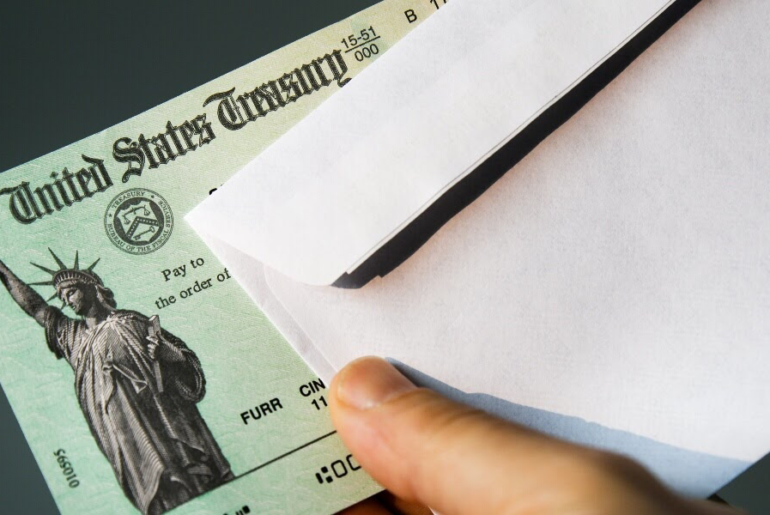Late Sunday night, president Donald Trump signed Congress’ enormous coronavirus package relief into law. The signing comes after days of resistance, with Trump calling the bill a “disgrace” and pushing for Congress to raise the amount of direct payments to Americans.
“The compromise bill is not perfect, but it will do an enormous amount of good for struggling Kentuckians and Americans across the country who need help now,” said Senate Majority Leader Mitch McConnell, R-Ky. “I thank the President for signing this relief into law.”
The $2.3 trillion package is now the second biggest bill ever passed by Congress, the first one being the CARES Act, passed earlier this year.
The Highlights
Of the $2.3 trillion package, $1.4 trillion will go into federal government funding while the other $900 billion will go towards Covid-19 relief, including another round of stimulus checks for qualifying individuals, who will receive $600 plus another $600 per child (depending on their income and migratory status).
A hundred and eighty billion dollars will be allocated to much-needed $300-a-week unemployment benefits while $284 billion will go into the Paycheck Protection Program (PPP) to aid small businesses.
On the Covid-19 front, the legislation will allocate $20 million to purchase more vaccine doses and provide them at no cost for the public as well as $9 million for vaccine distribution. It would also give states $22 billion to assist with testing and $175 million fund for hospitals and care providers to reimburse them for any health-related expenses or wages lost during the pandemic.
The legislation also set aside $400 million to send to food banks and food pantries through The Emergency Food Assistance Program and would add $175 million for nutrition services for seniors, such as Meals on Wheels and the Commodity Supplemental Food Program. The deal would mean a raise in SNAP benefits by 15% for six months.
Other notable mentions are the $82 billion that have been set aside for education programs, in addition to another $19 billion intended for childcare and $25 billion for renters to pay utilities and rent during the eviction ban.
The legislation also funds the federal government through September, however, does not include any funding for state and local governments.
What is different from the CARES Act?
The main and most notable difference between this and the CARES Act is of course the amount difference in the individual stimulus checks. Back in the spring when the first coronavirus relief package was passed, each qualified person received $1200 stimulus checks (depending on their income size). This time around, as stated above, individuals will only be receiving $600 in individual payments.
Other differences include the amount of unemployment benefits, which was also halved from an additional $600 to an additional $300 a week, and a reduction in the amount a borrower can receive from their PPP from $10 million to $2 million per business. Notably, the legislation has left out specific funding for restaurants, however, they will be able to request aid from the PPP.
However, on a positive note, those same businesses will now have more flexibility on how to spend that money (for loans under $150,000) and, most notably, mixed-status families will be eligible to receive checks. Back in March, thousands of families were outraged to find out that they wouldn’t be receiving stimulus checks because of immigration status of some members of their families. This time around, lawmakers made sure to include these families in the help.
Who qualifies for the stimulus checks?
As with the previous checks, only people with a valid Social Security number will be able to receive checks, leaving out millions of immigrants who file their taxes using an Individual Taxpayer Identification Number (ITIN).
“Nonresident aliens” are not eligible for the second stimulus check. The government defines a nonresident alien as someone who “has not passed the green card test or the substantial presence test.”
To be able to receive the full $600, an individual would have had to make less than $75,000 in the 2019 tax year. Conversely, if they are the head of the household, they could make up to $112,500 and still receive the full payment. And, as for couples, the maximum they can make to receive the full $600 per adult is $150,000 total.
For every $100 after that, there will be a $5 reduction until the assistance completely fades out.
People 17 and older, even those who still live at home, do not qualify as dependents during this round of stimulus checks.
When will you get the check?
Depending on whether you have direct-deposit set up with the Internal Revenue Service (IRS), you could be receiving the second check sooner than later.
“Most of these will be direct deposits. We call them ‘checks in the mail,’ but most will be direct deposits,” Treasury secretary Steven Mnuchin said. “It will be within three weeks. We are determined to get money in people’s pockets immediately. So that will be within three weeks.”
If you don’t receive a check by Jan. 15, you will need to claim it as Recovery Rebate Credit when you file your taxes in 2021.

